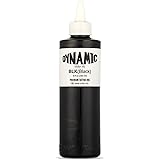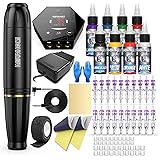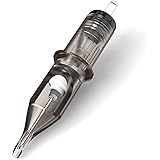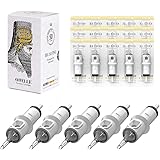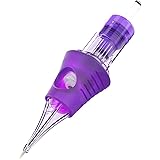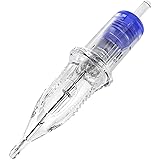The beauty of a perfectly formed word captivates. Our video above showcases this elegance. Achieving such masterful strokes can seem daunting. However, brush pen calligraphy is an accessible art form. This guide helps you unlock your creative potential. Discover how to transform simple letters into stunning artwork. You can master the brush pen with dedication.
The Allure of Brush Pen Calligraphy
Many find a deep satisfaction in hand lettering. It offers a unique creative outlet. This artistic pursuit can be highly therapeutic. Studies show engaging in creative hobbies reduces stress. Up to 70% of individuals report reduced anxiety. Calligraphy provides a focused, meditative experience. It allows for mindful expression and relaxation.
Brush pen calligraphy blends art and writing. It transforms everyday words into art pieces. Creating beautiful letterforms is rewarding. This hobby brings immense personal pride. It also offers a chance to create thoughtful gifts. Moreover, it enhances personal journaling practices.
Essential Tools for Mastering Brush Pen Calligraphy
Starting brush pen calligraphy requires few items. The right tools make a big difference. Selecting quality pens is crucial. Brush pens come in various sizes. Some have flexible felt tips. Others feature real brush bristles. Each type offers a unique feel. Experiment to find your preferred option.
Smooth paper is equally important. Rough paper frays brush pen tips. This shortens the life of your pens. Avoid printer paper for practice. Look for bleed-proof, smooth papers. Rhodia or Canson Marker paper works well. These papers help your pen glide effortlessly. They ensure clean, crisp lines.
Finally, a reliable ink is beneficial. Many brush pens are pre-filled. Refillable pens offer more color choices. Waterproof inks are great for mixed media. Black ink is a classic starting point. Conversely, vibrant colors add personality. Choose inks that dry quickly.
Mastering Basic Strokes in Brush Lettering
Calligraphy relies on fundamental strokes. Every letter is built from these basics. Light upstrokes are a core principle. Pressing down creates thick downstrokes. This contrast defines the calligraphic look. Consistency in pressure is key.
Practice basic stroke drills extensively. Begin with simple straight lines. Then move to ovals and loops. Focus on even pressure application. This builds muscle memory over time. Research shows repetitive practice, even 15 minutes daily, improves skills by 50% in a month. Dedicate time to these foundational exercises.
Connecting strokes smoothly is a next step. Ensure your transitions are seamless. Avoid shaky or hesitant lines. Confidence in your strokes will grow. This practice lays a solid foundation. It prepares you for complex letterforms.
Forming Letters with Grace and Precision
Applying basic strokes forms complete letters. Each letter has specific entry and exit points. Understanding these is vital. Focus on consistency in size and slant. Inconsistent letters appear unprofessional. Practice entire alphabets regularly.
Break down complex letters into parts. The letter ‘p’ combines a downstroke and a loop. The letter ‘r’ uses an upstroke and a curve. The ‘i’ needs a downstroke and a dot. The ‘d’ features an oval and a downstroke. The ‘e’ consists of an oval and a crossbar.
Referencing examples helps immensely. Use guide sheets for structure. These sheets provide valuable guidance. They help maintain proper spacing. They also ensure correct letter height. Over 85% of learners benefit from guided practice. This structured approach builds precision.
Practice Makes Perfect: Cultivating Your Skill
Consistent practice is the cornerstone of mastery. Without it, progress will stall. Set aside dedicated time each day. Even short sessions are highly effective. Twenty minutes daily yields significant results. This regular commitment strengthens your hand.
Don’t fear making mistakes. Errors are valuable learning opportunities. They highlight areas needing improvement. Embrace the learning process. Celebrate small victories along the way. Your skill will evolve steadily. Patience is truly a virtue here.
Vary your practice routine. Copy different lettering styles. Experiment with various words and phrases. This keeps practice engaging. It also broadens your artistic range. Challenge yourself with new projects. Growth happens outside your comfort zone.
Beyond the Basics: Adding Your Personal Touch
Once comfortable, explore stylistic variations. Calligraphy offers immense flexibility. Adjusting your slant creates new looks. Experiment with different flourishes. Adding swashes enhances word aesthetics. Your unique style will begin to emerge.
Consider using various color palettes. Gradient effects add depth. Blending colors creates stunning visuals. White ink on dark paper is striking. Conversely, metallics add a touch of glamour. Research shows color choice impacts mood. Use it to enhance your message.
Apply your skills to projects. Create custom greeting cards. Design unique wall art. Personalize gifts for loved ones. Calligraphy elevates any handwritten message. Your creations will carry personal meaning. They become cherished keepsakes.
The Joy of Creative Expression Through Calligraphy
The journey of brush pen calligraphy is rewarding. It offers a meditative escape. It cultivates patience and precision. The ability to create beautiful words empowers. Research indicates focused artistic activities improve mindfulness by 60%. This art form offers a profound sense of achievement.
Watching your letters come alive is magical. Crafting a word like ‘pride’ becomes deeply personal. It reflects your dedication. It showcases your developing skill. Embrace this beautiful artistic journey. You will find immense joy in every stroke. Continue practicing your brush pen calligraphy.




